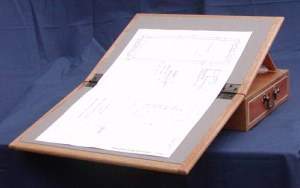JEFFERSON LAPTOP DESK
"On that desk was done a work greater than any battle, loftier than any poem, more enduring than any monument." Senator John Warfield Johnston of Virginia, 1880
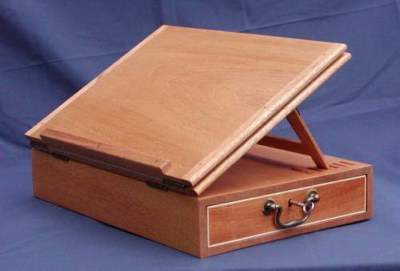
This small lap
desk was based on the desk that Thomas Jefferson designed and used to draft the
Declaration of Independence at the birth of our nation.
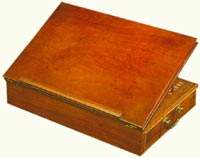 The original at the Smithsonian in Washing ton, DC
The original at the Smithsonian in Washing ton, DC
History
and Background:
The
most accurate information I could find about the history of the desk was based
on a research project that was featured in the February 2001 issue of Smithsonian
magazine. In 1776, Thomas Jefferson had traveled to Philadelphia to attend
the Second Continental Congress - during his trip he arranged to stay with a local
cabinetmaker named Benjamin Randolph. Jefferson had conceptualized a design
for a small lap desk that could be taken anywhere, including his long coach trips
from Virginia to Philadelphia. Randolph built the desk for Jefferson based
on his plans using solid mahogany with inlays at both ends. Though small, the
desk must have proved a very difficult project, with lots of fine, delicate, detail
work. The desk, being small and portable, provided the perfect companion
to Jefferson during his travels, allowing him the comfort of reading and writing
wherever he roamed. Many of Jefferson’s letters, memos and papers were
composed on the desk, and it was used for the drafting of the Declaration of Independence.
Jefferson carried the desk with him until the year he died - at which point it
was passed on to his grandson-in-law, Joseph Coolidge.
The
original desk is on display in the Smithsonian - it looks worn and well used,
but holds the scars of its hard life with great dignity. The desk that Benjamin
Randolph built was constructed in such a way that the seasonal movement of the
wood caused problems with some of the joints - and the writing boards had warped
significantly over the years. I approached this project slightly differently than
I would a normal reproduction. I choose to redesign the construction of
the desk to minimize or eliminate the structural problems I observed in the original,
while maintaining the look, function and charm. I imagined myself as Benjamin
Randolph who had just been given a sketch of a writing box by Thomas Jefferson.
The differences in my recreation are mainly the orientation of the grain
in the main box and writing boards, the use of bread board ends on the free writing
boards to minimize warping, and the adjustment of the interior partitions to allow
a sheet of standard paper to fit.
Use
and Functions:
In
its closed position, the desk is approximately the size of a laptop computer (14.25"
x 10" x 3.5"). It can be easily carried under one arm.
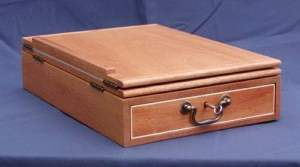
The support stand under the lower writing board can be unfolded and set into one of the five notched positions to provide a comfortable angled surface for reading or writing.
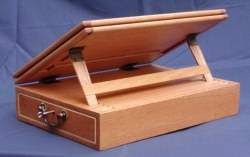 | 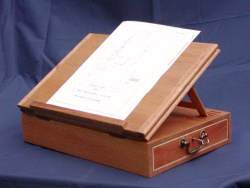 |
The drawer is lockable and has some incredible detail work, such as, the miniature hand cut dovetail joints at the corners, miniature drawer dividers, maple inlay, and solid brass handles.
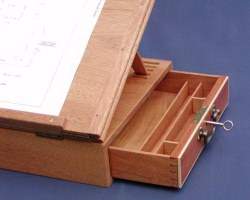 | 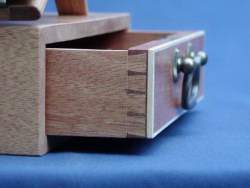 |
Finally, the writing boards can be unfolded to produce a large writing surface covered with baize (a woven felt-like fabric). This surface can be used in conjunction with the support stand to produce a comfortable writing position.
